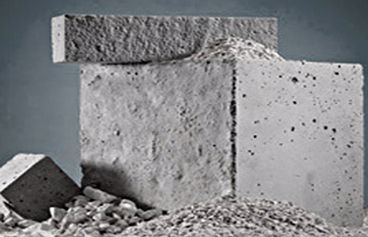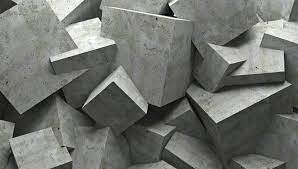What is Concrete and How is it Produced?

When concrete is mentioned, gray stone comes to mind. Its gray or similar color is since the binder used today is mostly cement. Although cement is generally used, concrete manufacturers use various additives and binders to give different concrete properties. For example, in portland cement concrete, the binder is a mixture of portland cement and water. It also uses asphalt and other materials as binders. Producers thus obtain “asphalt” and “polymer .” However, when “concrete” is mentioned, portland cement comes to mind.
Concrete is a widespread building material today. There is almost no construction that does not require concrete. It used in the construction of roads, buildings, bridges, other structures, and water structures such as dams and canals. This product appears both as a carrier element and as a decorative material. It preferred in durability, fire resistance, water resistance, economical production, energy efficiency, and on-site manufacturing. This product also used in making ready-made reinforced concrete products.
Concrete Production
 Separate industrial branches prepare the cement and aggregate required for concrete. The last step is to prepare the mixture and use the concrete. Selection of appropriate mixing ratios; It ensures that properties such as economy, machinability, strength, durability, and appearance obtained in a balanced way. These vary depending on where they used. The ratio of mixing water to cement amount is the most critical factor affecting the strength. Another crucial factor is the amount of air in the product. This amount is around 0.3-3% in standard concrete. These two effects constitute the two most essential factors in the control of product quality.
Separate industrial branches prepare the cement and aggregate required for concrete. The last step is to prepare the mixture and use the concrete. Selection of appropriate mixing ratios; It ensures that properties such as economy, machinability, strength, durability, and appearance obtained in a balanced way. These vary depending on where they used. The ratio of mixing water to cement amount is the most critical factor affecting the strength. Another crucial factor is the amount of air in the product. This amount is around 0.3-3% in standard concrete. These two effects constitute the two most essential factors in the control of product quality.
It is also essential to obtain a homogeneous concrete mixture. Mixing work carried out with concrete mixers at the construction site. In some exceptional cases, they also do the mixing with shovels. In general, they measure the cement bag, aggregate weight, and water volume, which make up the mixture. Some producers prepare the mixture. In return for the request to made here, they prepare a ready-to-use combination of the desired quality. Mixing can done in stationary mixers as well as in mobile mixers.
Hardening
The last step in obtaining concrete is the maintenance and hardening of the poured the product. Hydration of hardening portland cement, chemical reaction with water
We generally think that concrete hardens as a result of the evaporation of water. In reality, this is not true. Without water, neither hydration nor hardening can take place. The water lost due to the hydration of the cement and only allows the excess water to evaporate. Chemical reactions in the circuits of this are pretty complex.
Producers now use additives due to the problems occurring in the concrete produced. These additives both increase the strength of the product and protect it from water damage, and allow the admixture to be fluid or solid according to its consistency.
Durability
 Concrete durability is its resistance to aggressive elements in the external environment. In addition to these elements, it is possible for the components that make up the product to react in some cases. Such internal corrosion events can exacerbated depending on the external environment. It must be resistant to natural chemical damages and not lose its qualities due to external physicochemical factors. For this, producers want to have sufficient chemical resistance (durability).
Concrete durability is its resistance to aggressive elements in the external environment. In addition to these elements, it is possible for the components that make up the product to react in some cases. Such internal corrosion events can exacerbated depending on the external environment. It must be resistant to natural chemical damages and not lose its qualities due to external physicochemical factors. For this, producers want to have sufficient chemical resistance (durability).
As a result of the reaction of any element made with cement, its strength should not increase over time but should not decrease. It loses its potency over time due to a number of chemical reactions under various harmful effects. In this case, the structure is partially or wholly destroyed or becomes unusable due to not being able to withstand the forces to which the product is exposed. Carbonation, which is a physicochemical process, decreases the alkalinity of the environment and destroys the protective oxide layer.


